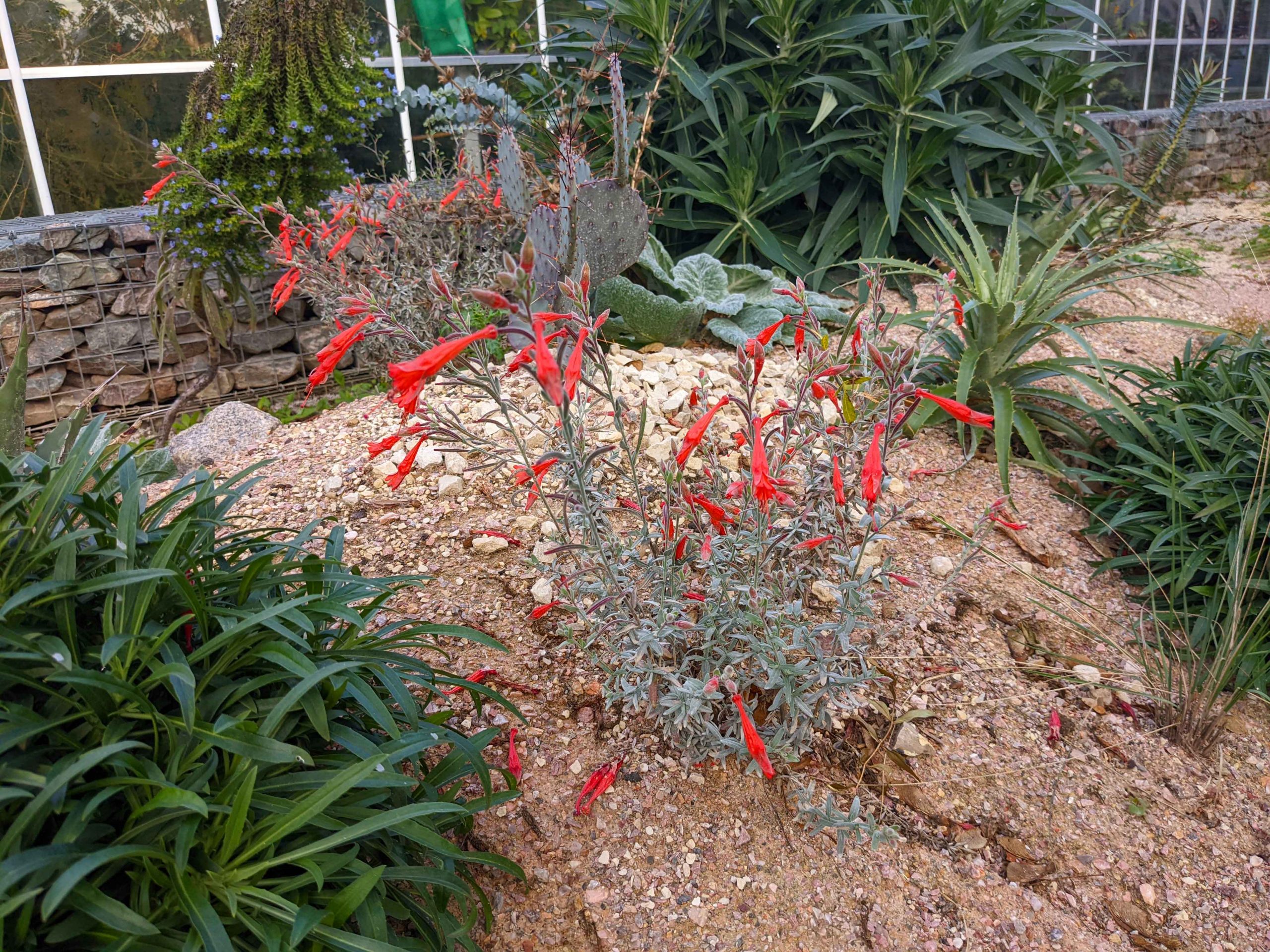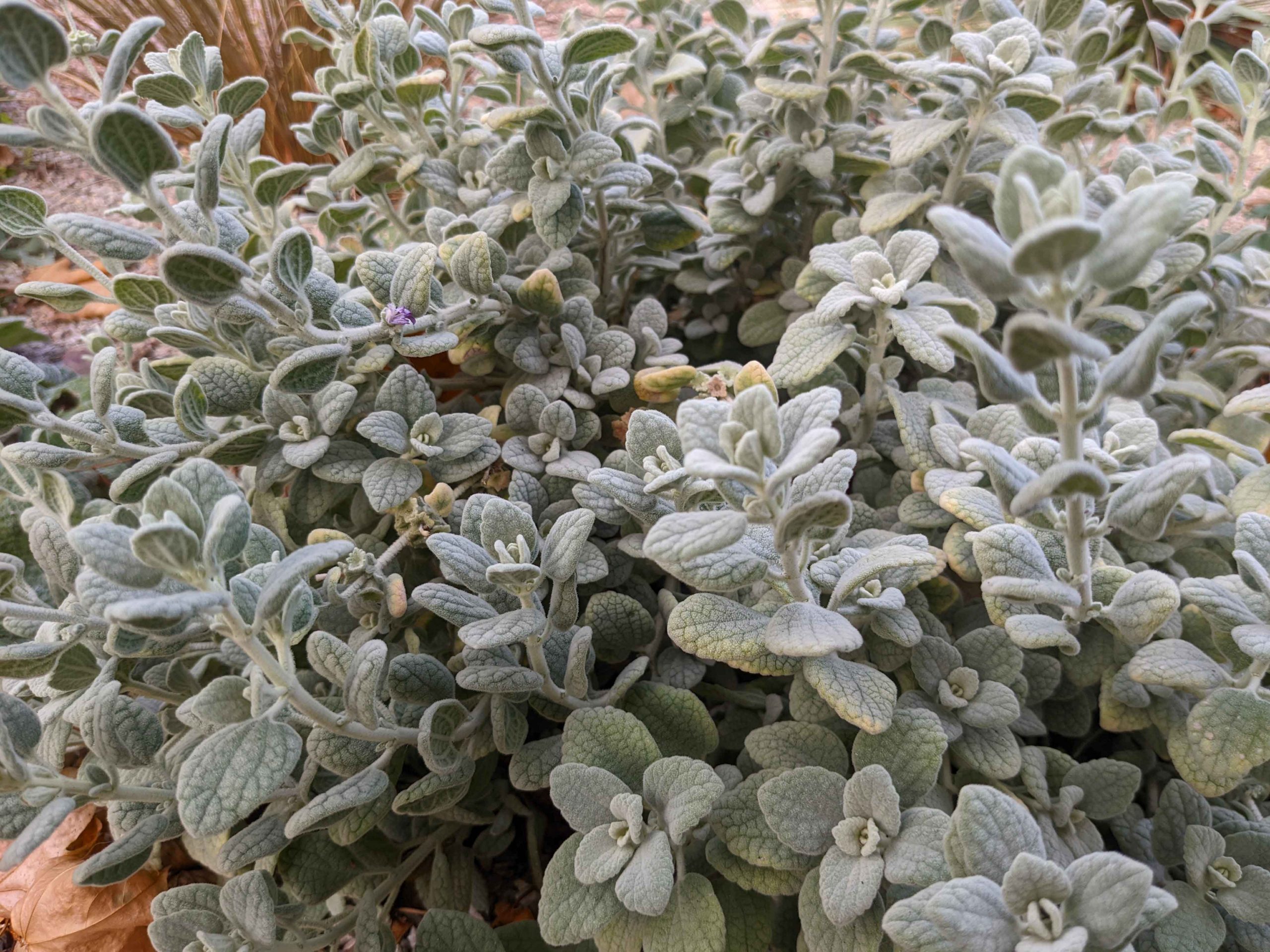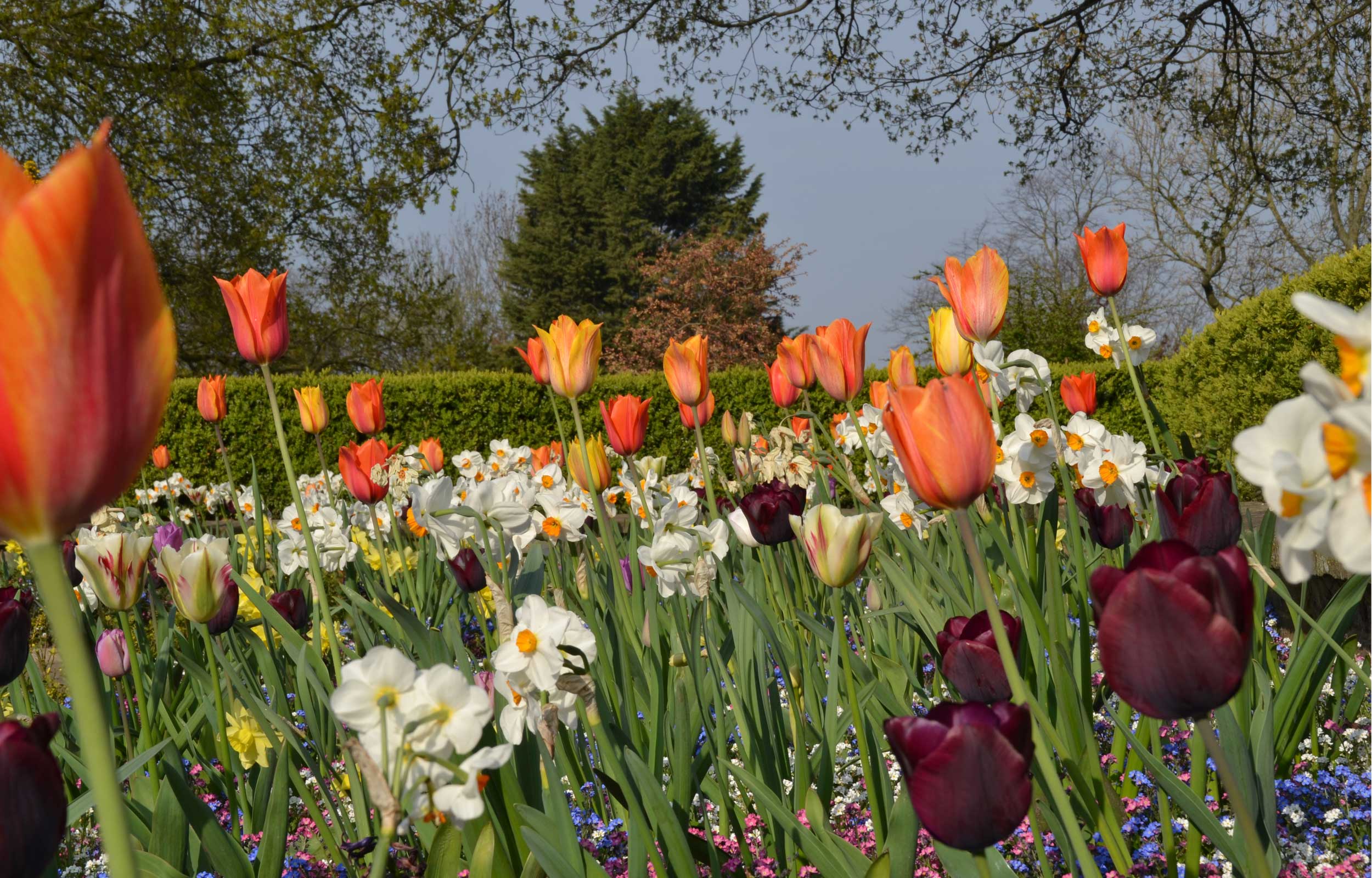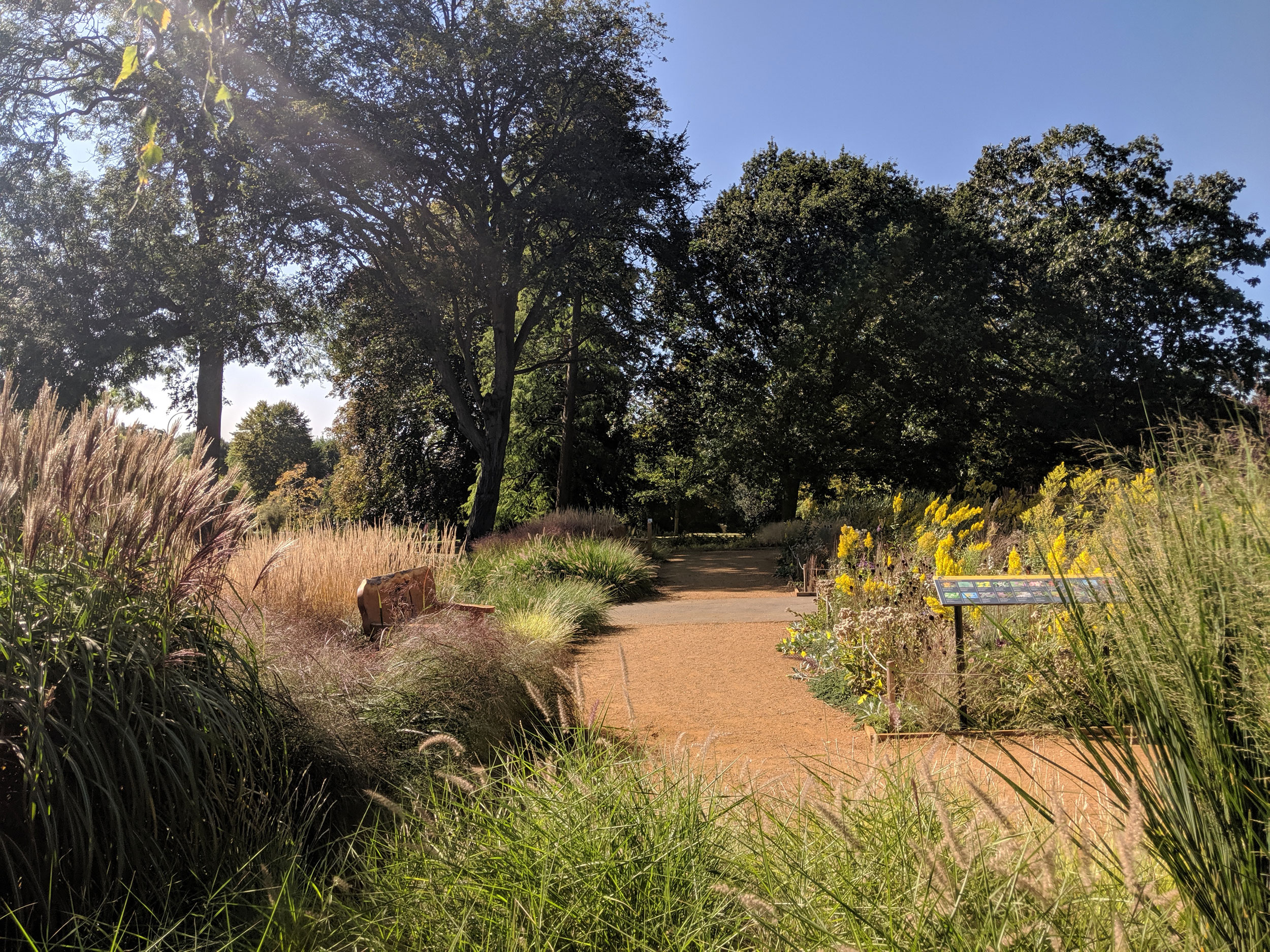There are a number of new beds around the Gardens, made up of plant species from around the world, including North Africa, Brazil and the Mediterranean.
The plants have all been chosen for their drought tolerance and resistance to climate change. As the climate in the UK warms up, this will be increasingly important for all gardeners.
The Gardens team spent a year gathering plants before the bed was actually planted.
It’s exciting to grow these plants here, but it’s also bittersweet. We are only able to have species like these growing outside of greenhouses because of climate change.
Planting the bed
The mound in the bed has been created using waste concrete and rock that has come out of the ground elsewhere in the Gardens. This raised area means we are able to accommodate plants like agave, which need increased drainage.
To further increase drainage, grit has been added to the soil and then the area is covered in a 5cm deep gravel mulch. Additionally, this mulch will reflect the sun, which reduces water loss from the ground below.
As the plants self-seed and spread themselves out, the bed will gradually change over time. We can’t wait to see how it develops!
The plants
These are just some of the plants you can see in the Gardening in response to Climate Change border by the Butterfly House.
California fuschia (Epilobium canum)
This species of willowherb is from the evening primrose family. It is native to dry slopes, especially western North America. It’s also sometimes known as hummingbird’s trumpet. In late summer and autumn it flowers with bright scarlet flowers.

California fuschia
Silver-leaved mountain gum (Eucalyptus pulverulenta)
This tree grows up to 12 metres tall, and has smooth grey bark. It flowers with cream coloured fluffy flowers, and its juvenile leaves grow in circular or heart shapes!
It is endemic to New South Wales, Australia.
False dittany (Ballota pseudodictamnus)
This low growing shrub is an evergreen. It has round white hairy leaves, and small pink flowers.
It is native to the south Aegean region.

False dittany
Oven’s wattle (Acacia pravissima)
Native to Victoria, the south west slopes and southern Tablelands of New South Wales, Australia, this flowering plant is evergreen. It has yellow flowers in late winter and early spring.
Around the Gardens
The Gardens Team is making other changes around the Gardens to plant in a more sustainable way.
Sunken Garden
One key change in the way that we plant is moving away from high-intensity seasonal planting, i.e. creating entirely new displays with each season. Seasonal planting is labour-intensive, water-intensive, generates waste and has led to a decline in soil bacteria.
We have taken steps to extend the life of the tulip bulbs, from this year’s spring bedding display in the Sunken Garden. The bulbs were planted deep in the soil, which means we can simply leave them in place to flower again next year, rather than lifting the bulbs and replacing them.
Moving to perennial planting like this is not only more sustainable, but it also means there are more plants and seeds around for birds and bees.

Tulips in the Sunken Garden, spring 2022
Grasslands Garden
The plant species in the Grasslands Garden come from the North American prairies and South African grasslands. The Garden has been specifically designed to be low maintenance, and drought-resistant.
The gravel bed is actually 15cm deep which allows for moisture retention, whilst the stones allow for lots of air to reach the roots. Stone beds are also excellent weed suppressors.
This area hasn’t been watered in two years!

London Road
We have planted a micro forest where the Gardens border the South Circular – the London Road Forest Border. The South Circular is one of the country’s busiest and most congested roads, but the new trees that have been planted will act as a ‘green screen’, protecting the Gardens from both noise and air pollution.
The planting of this forest border was made popular thanks to incredible support from the public.


